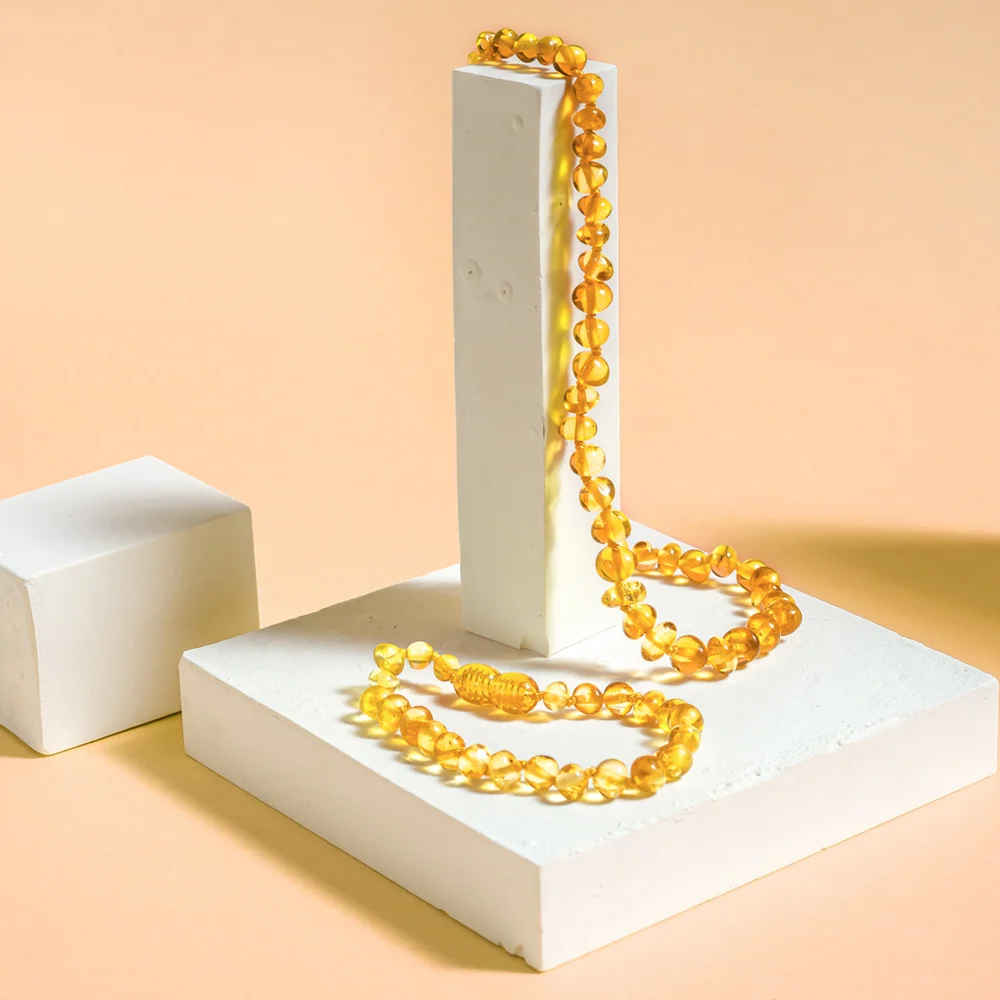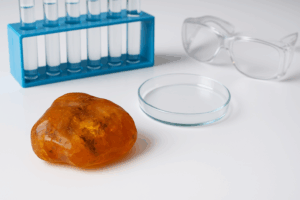Whether it’s a nagging ache in your back, sore joints after a long day, or your baby crying from teething pain — pain has a way of taking over everything. And while modern medicine offers quick relief, many people today are searching for something gentler, something natural, something that supports the body without side effects.
Enter Baltic amber — a golden fossilized resin that’s been worn for centuries not just as a decorative stone, but as a natural remedy for discomfort. But can a simple piece of amber jewelry actually help with pain?
In this article, we’ll explore what makes Baltic amber so unique, how it’s believed to support pain relief, and why more people are turning to it as part of their wellness routine — especially through trusted sources like BalticProud.com.
What Is Baltic Amber and Why Is It Special?
Baltic amber isn’t just a pretty stone — it’s the fossilized resin of ancient trees that lived over 40 million years ago in the Baltic region. Over time, this resin hardened into glowing pieces of amber, rich in warmth, history, and one powerful ingredient: succinic acid.
Succinic acid is a natural compound found in small amounts in many living organisms — including the human body. But Baltic amber contains it in unusually high concentrations, especially in the outer layers of raw or minimally polished stones. This is what makes it more than a piece of jewelry — it’s believed to offer anti-inflammatory, pain-relieving, and immune-supporting effects.
When amber is worn against the skin, body heat is thought to activate it, slowly releasing trace amounts of succinic acid. Many believe that this interaction helps soothe inflammation and reduce pain naturally — without the need for pills, creams, or chemicals.
And not all amber is created equal. Only authentic Baltic amber, like the kind sourced and handcrafted by BalticProud.com, contains the high-quality succinic acid levels needed for these therapeutic benefits. That’s why purity and origin matter — especially when you’re seeking genuine, lasting relief.
How Baltic Amber Is Believed to Work?
The healing potential of Baltic amber lies in its natural chemistry. The key player is succinic acid — a compound with known anti-inflammatory and analgesic properties. When Baltic amber is worn directly against the skin, your body’s warmth is believed to gently activate the resin, allowing microscopic amounts of succinic acid to be absorbed.
This process isn’t invasive or instant. It’s slow, consistent, and subtle — but many wearers say that’s exactly why it works. Over time, the succinic acid is thought to:
- Reduce inflammation, which is a common source of pain
- Support nerve and cellular recovery, especially in overused or inflamed areas
- Calm the nervous system, which can help with tension-related pain like migraines or jaw clenching
Unlike medications that suppress pain temporarily, Baltic amber is used as a supportive tool — a natural aid that works with your body’s rhythm to bring balance and relief. Whether it’s a necklace worn for neck stiffness or a bracelet helping ease wrist or joint pain, the goal is steady, gentle improvement over time.
Scientific and Traditional Perspectives
It’s important to be honest: there are no large-scale clinical trials proving that Baltic amber relieves pain. But there is compelling support from two directions — traditional use and modern scientific understanding of its components.
For centuries, Baltic amber has been used in folk medicine across Europe. Ancient cultures wore it as a healing stone, rubbed it on sore spots, and even ground it into powders for pain relief. Healers believed it helped draw illness and discomfort out of the body — a belief passed down through generations.
Modern science, while more cautious, adds interesting context. Research shows that succinic acid plays a role in managing inflammation and supporting cellular energy — both important factors in how the body experiences and responds to pain. Additionally, negative ions released by amber have been associated with boosting mood and reducing stress, which can amplify pain-relieving effects.
So while we can’t call it a medicine, Baltic amber clearly has a long-standing place in natural healing — and many users today continue to experience real comfort by wearing it daily.
Real-World Uses of Baltic Amber for Pain Relief
One of the reasons Baltic amber remains popular today is because of how versatile and practical it is for daily wear. People of all ages use it to manage different types of pain — not as a replacement for treatment, but as a natural companion to their wellness routine.
Here are some of the most common ways people use Baltic amber for pain relief:
- Neck and shoulder tension: Necklaces are worn to help ease stiffness caused by stress, posture, or muscle fatigue.
- Joint pain and arthritis: Bracelets and anklets are popular among people with chronic joint inflammation.
- Back and muscle aches: Some users report wearing amber over tight or sore areas for subtle, lasting relief.
- Teething in babies: Amber teething necklaces are commonly used by parents who believe the stone helps reduce gum inflammation and fussiness (always under supervision).
Amber’s appeal isn’t just about what it may do internally — it’s also about the emotional comfort it provides. Wearing amber can feel like putting on a shield of warmth and calmness, which matters a lot when you’re dealing with pain every day.
How to Choose and Use Baltic Amber Effectively
If you’re considering trying Baltic amber for pain relief, quality and contact are everything. Here’s how to make the most of it:
✔ Choose Raw or Lightly Polished Amber
Raw amber contains more surface succinic acid than highly polished pieces. Look for unpolished or semi-polished beads, especially in natural honey, cognac, or cherry tones.
✔ Ensure Skin Contact
Amber needs direct skin contact to activate its natural properties. Avoid wearing it over thick clothing or loose enough that it doesn’t rest on the body.
✔ Wear It Consistently
Amber works gradually. Most people notice subtle changes after several days to weeks of continuous wear. Many prefer to wear it all day, removing it only at night or during bathing.
✔ Shop from a Trusted Source
Unfortunately, many fake amber products exist. Always buy from reputable sellers who offer certified Baltic amber, like those at BalticProud.com, where each piece is carefully sourced and handcrafted for therapeutic use.
Why Source Matters: Choosing Authentic Amber
Not all amber is created equal — and when it comes to wellness, authenticity matters more than ever. The healing properties of Baltic amber come from its high concentration of succinic acid, but this powerful compound is only found in true Baltic-region amber. Cheap imitations made from plastic or resin not only lack these benefits — they can also give natural remedies a bad name.
To truly experience the calming and supportive qualities associated with amber, it’s essential to:
- Choose certified Baltic amber, not generic “amber-inspired” jewelry.
- Look for vendors who share transparent sourcing details.
- Opt for raw or semi-polished amber, which retains more of its natural compounds.
- Prioritize brands that test their pieces and offer authenticity guarantees.
At BalticProud.com, every item is carefully crafted from genuine Baltic amber, responsibly sourced and designed for safe, everyday wear. That peace of mind is part of the healing experience — because when you invest in something real, your body knows the difference.
A Natural Ally Against Everyday Pain
Baltic amber isn’t a miracle cure — but for many, it’s a gentle, natural way to ease everyday discomfort. From joint pain to tension and teething, it offers subtle support rooted in tradition and nature.
Worn close to the skin, real Baltic amber can bring warmth, calm, and relief — without the side effects. And when sourced from trusted makers like BalticProud.com, you know you’re getting the real thing.
Because sometimes, lasting comfort comes from something beautifully simple.
Sources:
Tannahill GM et al., Cell (2013)
https://www.cell.com/cell/fulltext/S0092-8674(13)00266-3
Hochrein J et al., Haematologica (2019)
https://haematologica.org/article/view/8615
Perez V et al., BMC Psychiatry (2013)
https://bmcpsychiatry.biomedcentral.com/articles/10.1186/1471-244X-13-29







